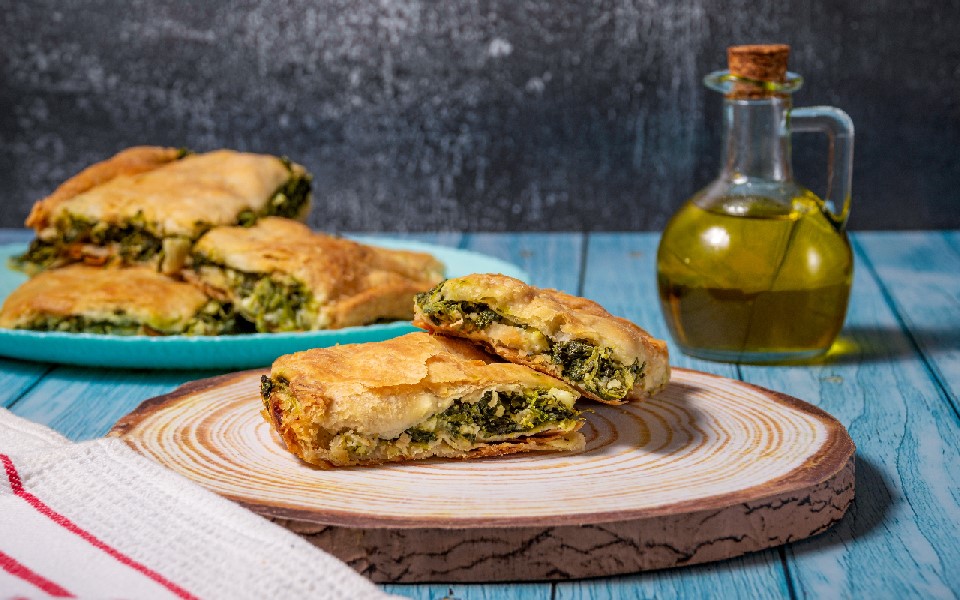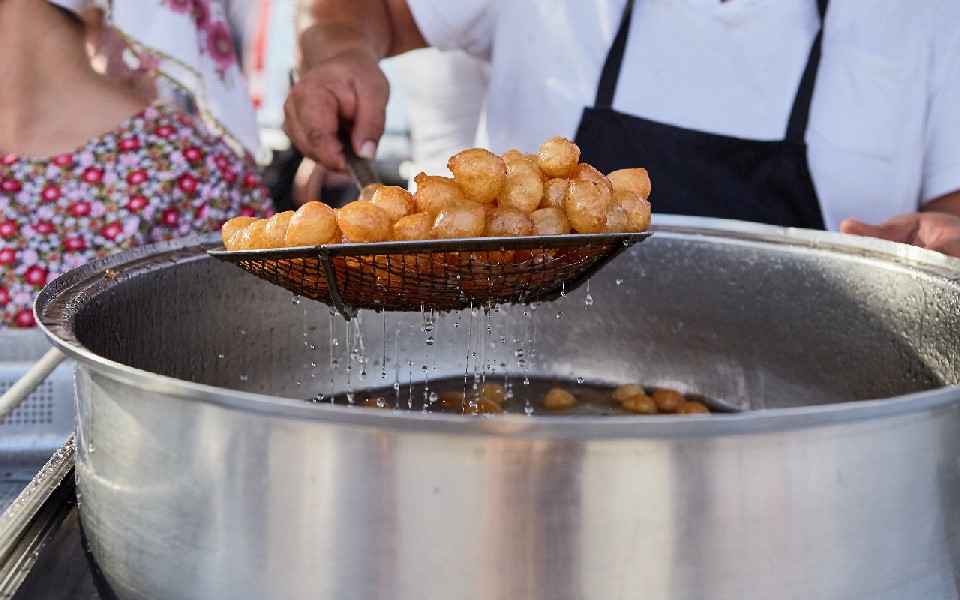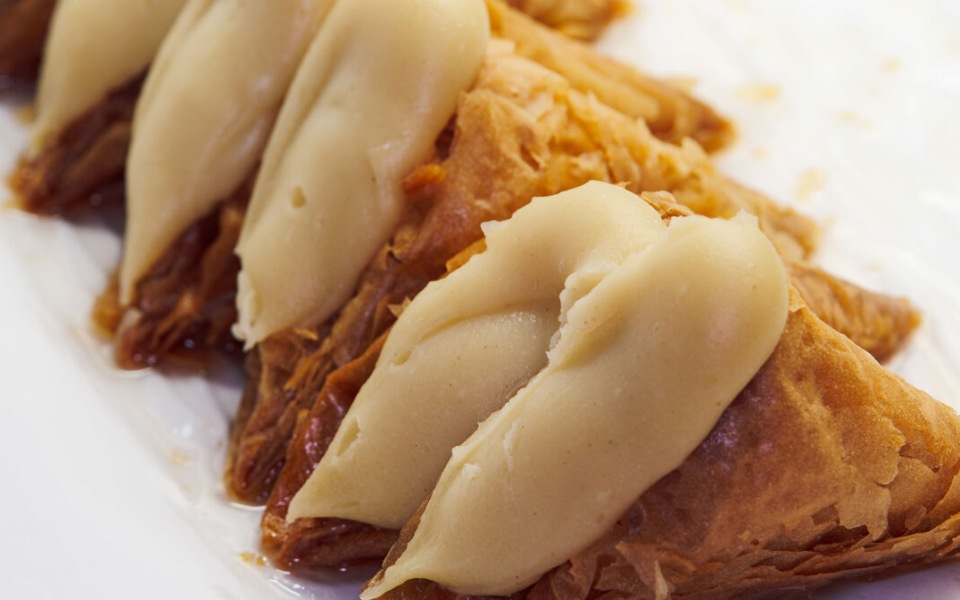As we recover from the gorging season and set ambitious dietary targets for ourselves for the New Year, we thought it might be fun to momentarily distract you with this little ditty about the global popularity of … Greek pastries!
It’s well established among foodies that Greece is home to an extraordinary variety of pastries, both sweet and savory, with the country boasting a rich culinary heritage that extends across the various regions of the mainland and islands. Renowned for their exquisite flavors and unique textures, the worldwide appeal of these delectable treats reflects the enduring charm of Greek pastry craftsmanship, captivating taste buds globally.
To that end, self-described “world atlas of traditional dishes, local ingredients, and authentic restaurants,” Croatia-based TasteAtlas has compiled a comprehensive list of Europe’s Top 100 Pastries, based on the ratings of its online members. Unsurprisingly, 16 of Greece’s most beloved delicacies have made the final cut, with three ranking in the top ten.
Let’s take a closer look:
Top Ten
Two Portuguese pastries have claimed the top slots in the list, with the sweet “Pastel de nata,” from the Lisbon district, being crowned Europe’s number one. This traditional egg custard tart, “made before the 18th century by Catholic monks and nuns in Santa Maria de Belém in Lisbon,” is hugely popular throughout the world, and should be “sprinkled with cinnamon and, ideally, paired with a cup of coffee,” according to the website.
The predecessor to the famous pastel de nata, “Pastel de Belém,” sits in second place in the TasteAtlas rankings, a traditional sweet originally produced by the monks of the Jerónimos monastery. Made with a pastry shell and filled with a combination of milk, eggs, sugar, lemon and cinnamon, the website notes that “only the custard tarts produced at the Fábrica Pastéis de Belém can be called pastel de Belém,” and that a 2009 article in the UK’s Guardian newspaper listed the sweet Portuguese pastry as “one of the 50 ‘best things to eat’ in the world.”
In third place, with a score of 4.7 stars out of five, sits our first Greek delicacy: “Trigona panoramatos,” first produced in the outskirts of the northern city of Thessaloniki – a city that is fast emerging as one of Europe’s top culinary destinations. The website describes these scrumptious cone-shaped phyllo pastries as “crispy and buttery … typically soaked in syrup and filled with creamy custard.” It adds that trigona is often “garnished with chopped nuts before consumption.”

© Shutterstock
Hot on its heels in fourth place comes “Bougatsa,” a rustic sweet pastry from the northern Greek city of Sérres. This traditional pie, which has its origins in the Byzantine period, consists of a thinly rolled, hand-made “phyllo pastry layered with a filing of semolina custard,” according to the website, adding there are “variations with minced meat or cheese.” Bougatsa is a specialty of the Macedonian city of Sérres, but is widely available throughout Greece, and is fan favorite among visiting tourists.
In sixth place with a score of 4.6 out of five comes a savory treat from the island of Milos, “Pitarakia,” delicious little half-moon-shaped pastries filled with cheese. The website notes that while a crumbled local cheese “such as monoura” mixed with freshly ground pepper is the usual filling, other variations include “a mixture of local mizithra cheese, eggs, spearmint, and salt, or a combination of finely chopped red onions with dry Melian cheese.”
Rounding off the top ten are: Focaccia di Recco col formaggio (5th) from Liguria, Italy; the world-famous croissant (7th) from France; savory Burek (8th) from Bosnia and Herzegovina; sweet cinnamon rolls “Kanelbulle” (9th) from Sweden; and Banitsa with cheese (10th) from Bulgaria.

© Shutterstock
Best of the Rest …
Just outside the top ten, Greece’s beloved savory snack “Tiropita” – cheese pie – comes in at number 12, with a score of 4.4 out of five. The TasteAtlas website notes that there are “several theories about its origin, but most link the dish with either Byzantine, Roman, or Turkish cuisine,” and that they’re found in “almost every Greek bakery.”
In 14th comes the sweet pastry “Galaktoboureko,” a traditional dessert made of phyllo sheets and a light semolina custard, drizzled with melted butter, and doused in a rich, orange-spiced syrup.

© Shutterstock
Five more Greek pastries have made it into the top 50 of the TasteAtlas list, including: Skopelitiki tiropita (24th), a distinctive spiral-shaped cheese pie from the Sporades island of Skopelos; rustic Spanakopita (30th), a humble spinach pie; Kalitsounia (38th) from Crete, usually filled with cow’s milk cheese “mizithra,” and comes in sweet and savory versions; bite-sized Roxakia sweets (42nd), made with cocoa and cinnamon; and traditional Greek donuts, Fouskakia (43rd), delicious “bubbles” of fluffy fried dough, drizzled with honey and usually eaten while still warm, from the island of Alonnisos.

© Shutterstock
In the second half of the list, but no less respectable, are: Koukourakia (52nd), a braided pastry that is traditionally prepared during Greek Easter; deep-fried Loukoumades (69th), similar to fouskakia, considered to be one of the oldest recorded desserts in Greece; sweet Diples (79th), made of thin pastry sheets, deep-fried and drizzled in thick, honey-based syrup (especially popular in the Peloponnese); savory Hortpita (82nd), a delicious pie filled with a variety of seasonal wild greens and aromatic herbs, sometimes mixed with a crumbly cheese (such as feta); Hamalia (91st), a type of sweet pastry from the islands of Alonnisos and Skopelos, consisting of thin phyllo crust filled with a mixture of ground almonds, honey, cinnamon, and nutmeg; and finally Masourakia (93rd), sweet pastry rolls from Chios island, filled with mastic-flavored “ypovríchio” (a Greek sweet, also known as submarine), ground almonds, egg whites, and mandarin or lemon zest.
So, after all that (and post-Christmas diet aside), which Greek pastry sounds most appealing to you? Do you have a sweet tooth? Or are saltier, savory flavors more your thing?












